What type of contractor should I hire to fix wet wood around the gable vent in my 20-year-old house after a storm, especially with stone veneer?
11 months ago
Last Updated: August 7, 2024
I was up in the attic and saw that the wood around the gable vent was wet after the storm. The house is 20 years old and the wood isn’t rotten…yet. Seems like this only happens after big storms.
Do you think I could tackle this myself? Or should I hire a contractor? And if so, what kind of contractor should I look for? Especially with the stone veneer.
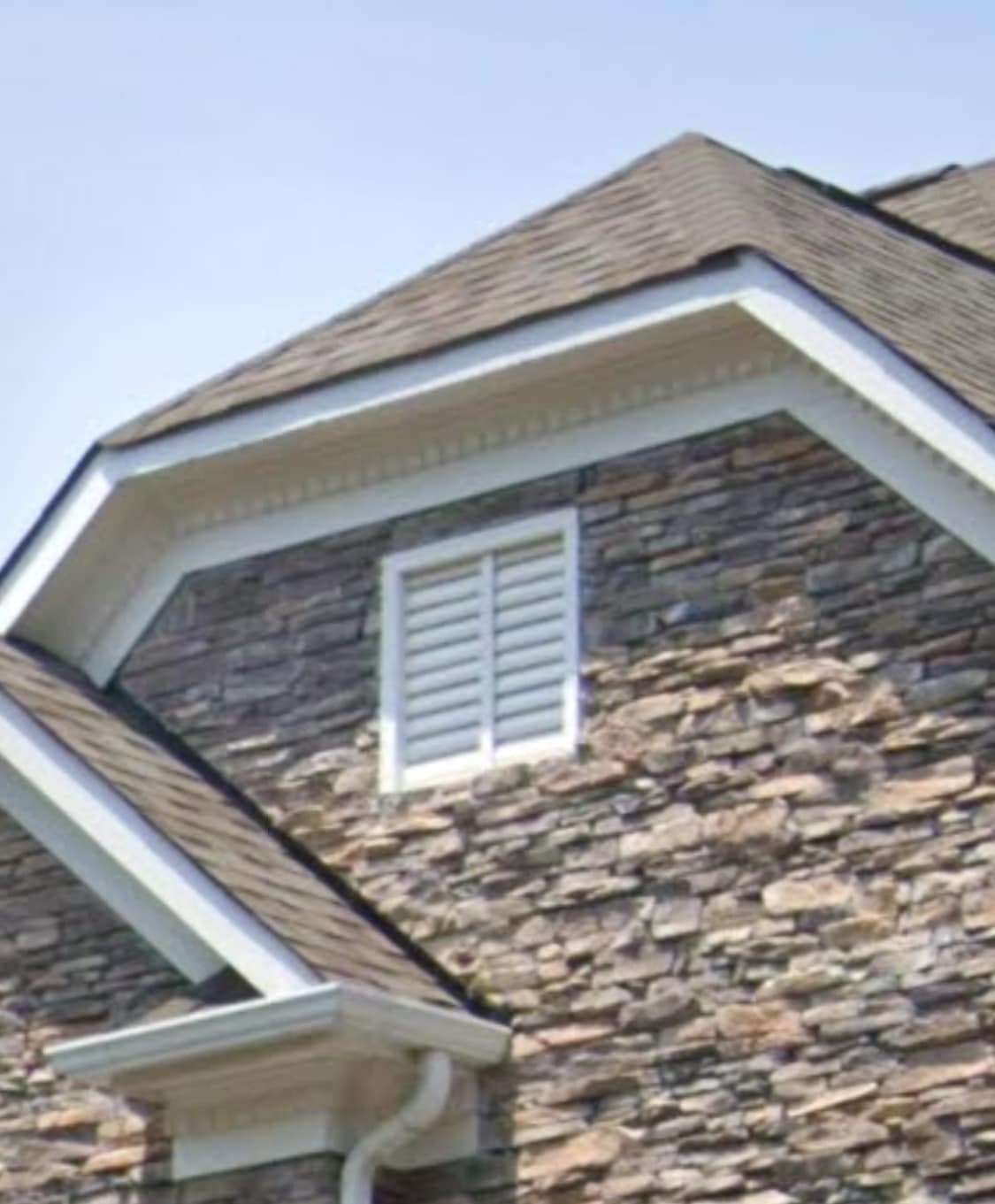
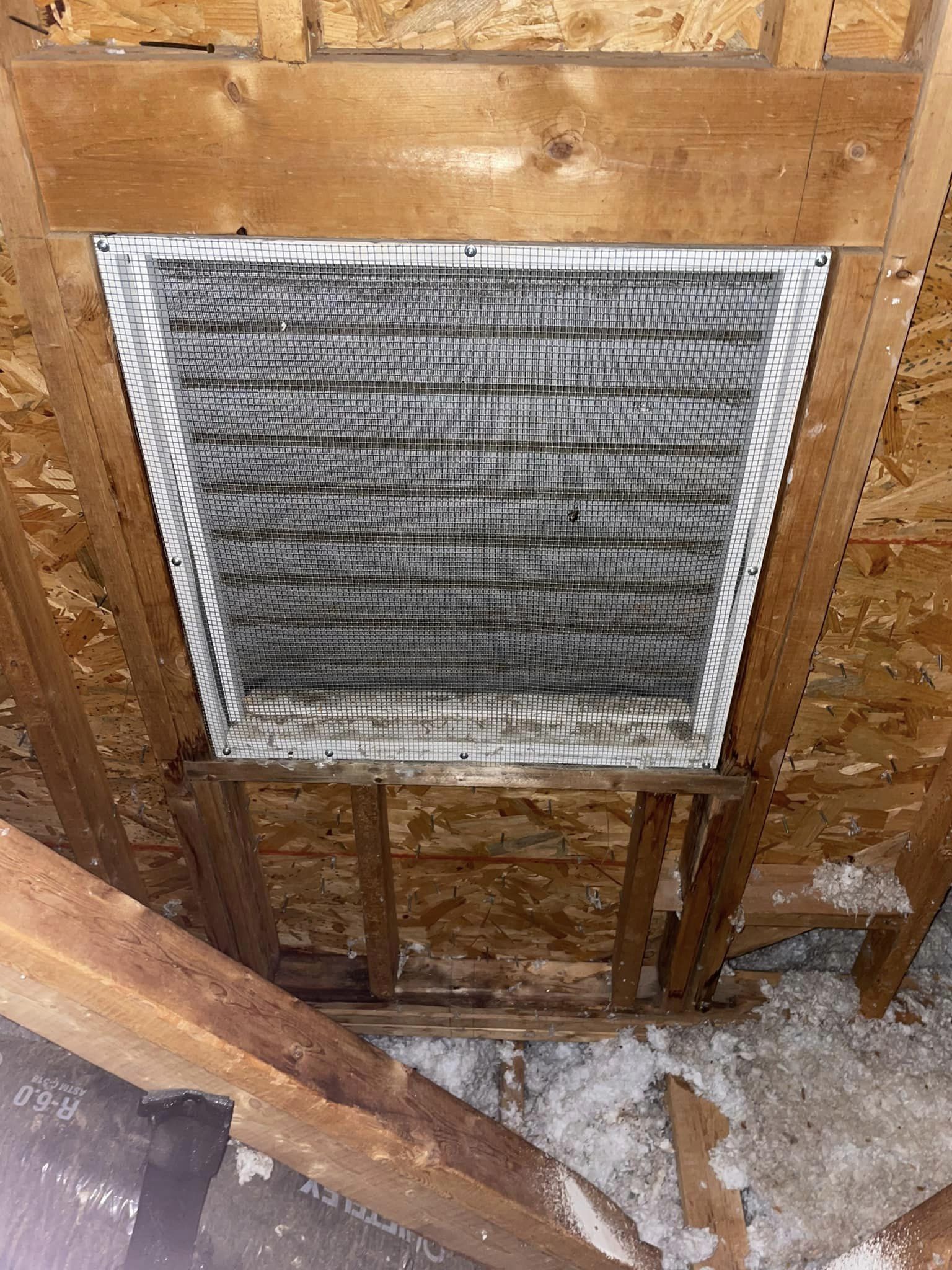
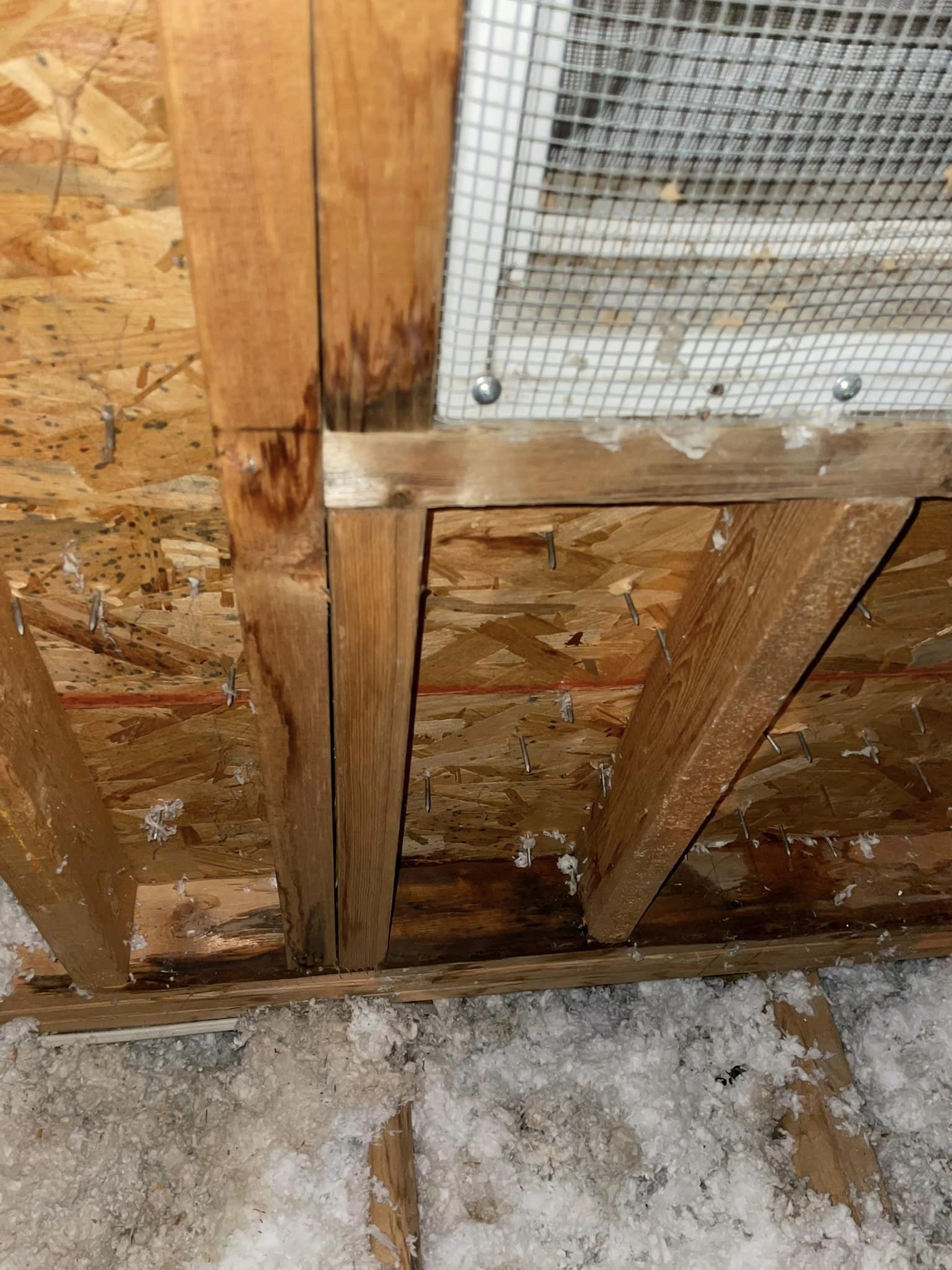
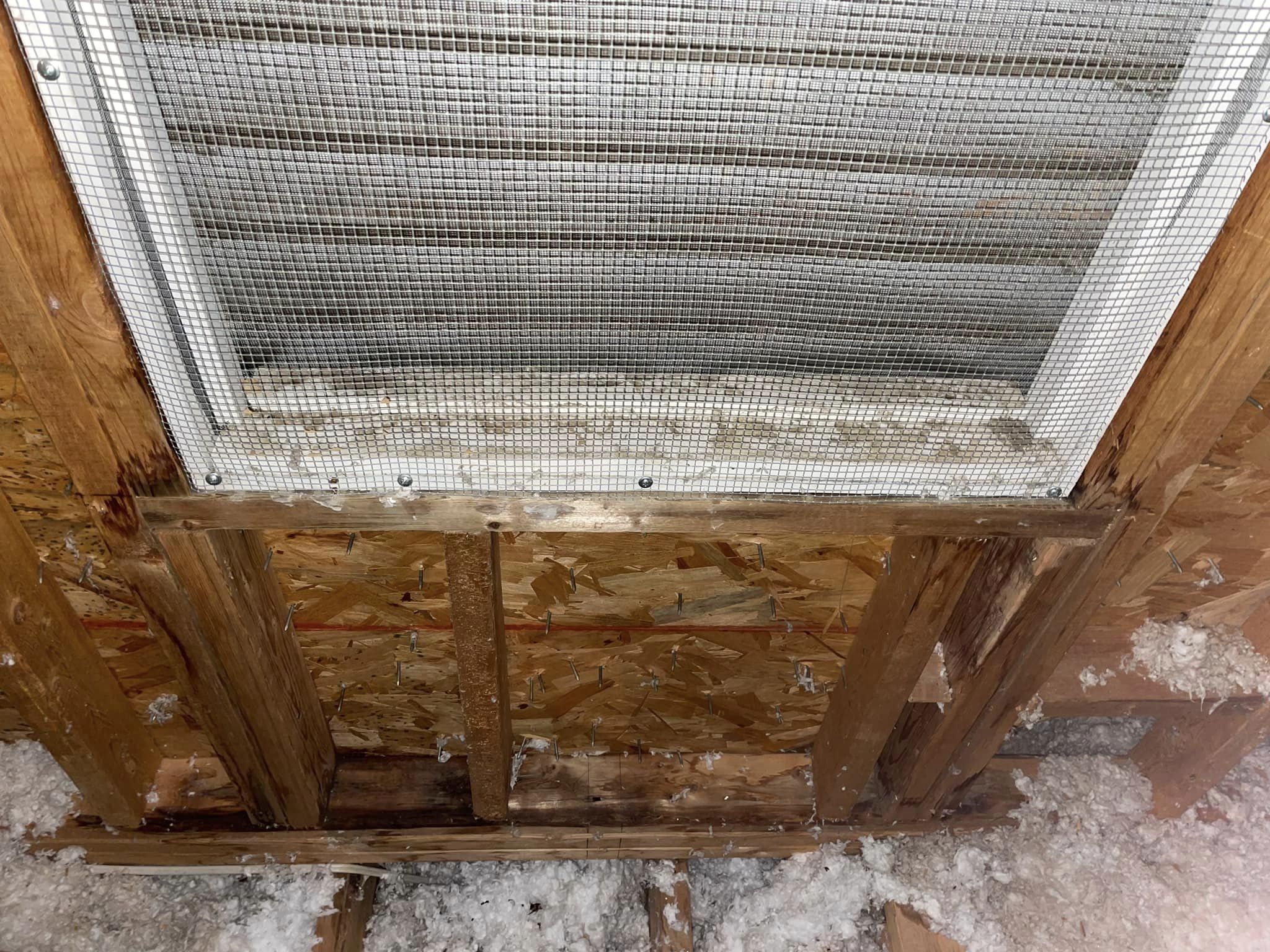
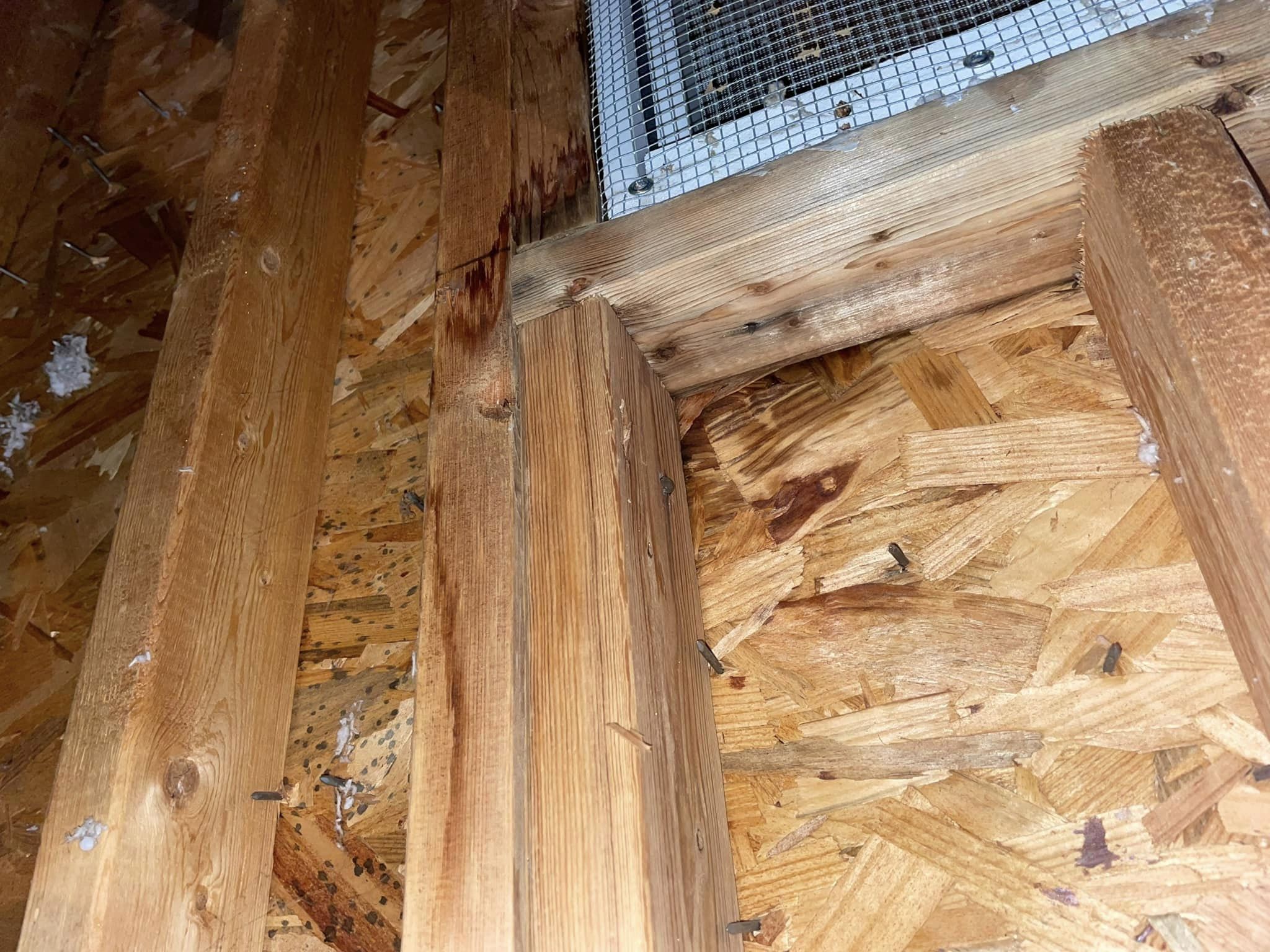
There might be an issue with the flashing or sealant on the outer side
Hey Chaz, I highly doubt there’s any flashing installed haha. From the outside, it looks like they put in the box-framed vent and then added decorative molding around the edges to match the house windows. I don’t see any caulking from the inside. I think I’d have to remove the decorative molding to reveal the joint between the vent box and the framing, caulk it, and then put the molding back on. I’m a little nervous about climbing a ladder for this. What kind of contractor should I hire for this job? My first guess would be a window company since it should be installed similar to a window.
Hey Chaz, I hope there isn’t any drip flashing through the wall under the vent louvre. It could seep through the entire wall below the frame. Since it’s unfinished space, you could extend it inside by 4 to 6 inches and up by 6 to 8 inches. Make sure to extend it up the sides as well. Avoid attaching the louvre through it, only above it.
It seems like the leak is only happening at the corners of the vent, not all the way down the wall. The drywall and plywood beneath the wet horizontal framing member are completely dry, with no water damage.
This is my understanding of the situation.
You should definitely check it after a normal rainstorm to see if it’s wet. Check again after one with wind blowing toward the vent. It appears to be wind-driven rain from that direction. In hurricane-prone areas, you’ll encounter this at every louvered gable vent. It happens intermittently, only when wind-driven rain comes from a specific direction. High winds can force water through or around flashings. If water is coming through the louvres, there’s not much that can be done other than protecting the materials below in some way. Proper attic ventilation is necessary. I don’t see any house wrap or plastic around the rough opening, which may indicate poor installation. If the unit has a flange, removing it will be difficult with the stone over the flange. I suspect that the vent is flanged. Applying sealant around both sides of the trim work and any joints might solve the issue. I work as an Inspector and I often find numerous issues where this faux stone lacks proper flashing and waterproofing details at wall penetrations and transition areas. Much of this is concealed by the installation of the stone. I hope that’s not the problem you’re facing because repairs would be messy. It seems like the installers did the right thing at the roof/wall transition instead of installing down to the shingles, which is a common mistake I come across. This is a good indication that other details may have been handled correctly. Any skilled handyman with experience in roofing and window installations can apply sealant. It may be necessary to remove the trim to do it properly. If that’s the case, consider using composite trim. It doesn’t rot and maintains its color. Since your trim is already white, there’s no need for painting. Wishing you the best of luck.
Gave some good advice! Thank you for that.
We actually experienced 50mph rain gusts the night before. I will have to check again in a regular rain storm to see if it’s wet.
It is definitely a spot I had noticed before due to the discoloration of the wood, but it was completely dry. So it could just be during the bad storms.
I had an inspector specifically look at the stone due to the reasons you mentioned. As you said, a lot of issues can be hidden, but the flashing at the bottom seemed right.
Unfortunately, there is no house wrapping on this house, as I discovered after another project.
When working with faux stone, you should have at least one layer of tar paper, but double layers are ideal. The tar paper tends to wrinkle, creating a weep plane for water to flow out at the bottom of the stone installation. Remember, the stone itself isn’t waterproof. Most sidings allow some water in, so it’s crucial to have a drainage system in place. If not, there could be hidden issues that are much bigger than a vent. It’s surprising to hear there’s no house wrap – what year was this house built? It looks quite modern, and house wrap has been a standard since the 80s except for a short period.
This house was constructed in 2003. Keep in mind, I’m in North Carolina, where the building codes are pretty relaxed. Apparently, house wrap only became a requirement here after 2003. I can see that there’s no house wrap under the siding. I think there’s a plastic vapor barrier between the plywood and wire mesh that the stone is attached to with mortar.
I’m also in NC, all the way out East. I’m a licensed GC, Home Inspector, and Termite/Pest operator. I remember now, back in 2003, there was a brief period where wrap wasn’t required. Back in the 70s, we used tar paper, which is still a solid choice. Personally, I’ve never built a house without a WRB. Having vinyl without a weather-resistant barrier can lead to issues, especially in hurricane zones.
Shared a snippet from the 1996 North Carolina code after researching further.
https://www.ncosfm.gov/1996-north-carolina-building-code-revisions-thru-1998/open#page467
Keep in mind the exclusion for wall sheathing
Mentioned that Plywood can also decay and separate.
Hey , I totally agree with you. The best practice and current code recommend wrapping it. However, I believe it passed code when it was originally built. I can see the plywood behind the stone and siding from the attic, and it still looks good from the inside even after 20 years. Who knows if it’s slowly rotting from the outside. Hopefully, I sell this house before that happens. 😂 By the way, I’m in Charlotte. Feel free to swing by and check out this gable vent for me! Haha.
All it really needs is to be sealed. I’d recommend using a colored silicone. Once you’re up on the ladder, you’ll probably be able to see if water is getting in, regardless of whether they used flashing or not.
Would you recommend sealing around the decorative moulding with a gray grout matching caulk? Or would you take off the moulding, caulk, and then reattach it?
What type of contractor would handle this? I’m a bit nervous about climbing up a ladder that high.
Drip moulding on the top and caulking on the sides could help prevent it from deteriorating. Wood can handle being exposed to some moisture, as long as it dries quickly and completely.
Any contractor who works with windows and doors could easily repair it.
Let’s go Bills!
Place a drying container on top of that.
I wouldn’t risk my life over it. I can’t figure out a safe way to bring a ladder up there.. I remember using a bucket lift once when I had to do some work on a steep roof. It cost me around $400 per day to rent one in North Alabama. Using a tube of Lexel might solve the issue. Maybe you could ask someone with a drone to take some good pictures of the exterior? I suggest getting a few estimates and comparing them to the rental cost of the lift.
I was checking out lift rentals last night. How did you get it to your place?
Decided to rent a trailer and tow it using his 1/2 ton pickup truck. It would have been around $100 for delivery.